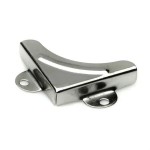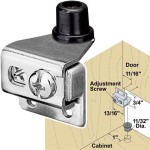How to Whitewash a Wood Mirror Frame
Whitewashing offers a versatile technique for updating a wooden mirror frame, providing a rustic, farmhouse, or shabby-chic aesthetic. This process lightens the wood while allowing the natural grain to show through, creating a unique and textured finish. This article provides a comprehensive guide to achieving a professional-looking whitewashed mirror frame.
Preparation is Key
Before beginning the whitewashing process, proper preparation is crucial for optimal results. The first step involves protecting the mirror's surface. Carefully mask the mirror using painter's tape, ensuring a tight seal to prevent any whitewash from bleeding onto the glass. Newspaper or drop cloths should be used to cover the surrounding area to protect it from drips and spills.
Assessing and Preparing the Wood
The existing finish of the mirror frame dictates the next steps. If the frame has a glossy or varnished finish, light sanding with fine-grit sandpaper (180-220 grit) is necessary to create a surface that the whitewash can adhere to. This sanding process creates small scratches that allow for better absorption. If the frame is unfinished or has a matte finish, sanding may not be required. However, a light sanding can still improve the final result.
Cleaning the Frame
Once sanding is complete, the frame should be thoroughly cleaned to remove any dust, debris, or sanding residue. A tack cloth is ideal for this, as it effectively picks up fine particles. Alternatively, a damp cloth can be used, followed by allowing the frame to dry completely before proceeding.
Choosing the Right Whitewash Mixture
The whitewash mixture can be created using two primary methods: paint and water, or chalk paint and water. For the paint and water method, equal parts latex paint (in the desired white shade) and water are combined. For a thinner, more translucent whitewash, the ratio of water can be increased. Chalk paint, known for its matte finish and easy distressing, can also be mixed with water, typically in a 1:1 or 1:2 ratio (paint to water). Experimenting on a scrap piece of wood similar to the frame is recommended to determine the desired opacity and consistency.
Applying the Whitewash
Several application methods can be employed, depending on the desired look and the intricacy of the frame's design. A brush, rag, or even a sponge can be used. When using a brush, apply the whitewash in the direction of the wood grain using long, even strokes. For a more rustic or distressed look, apply the whitewash unevenly, allowing some of the wood's original color to peek through. A rag can be used to apply the whitewash and then immediately wiped off for a subtler effect. A sponge allows for stippling and layering, creating a textured appearance.
Drying and Second Coats
Allow the first coat of whitewash to dry completely before assessing the need for a second coat. Drying times will vary depending on the humidity and temperature, but typically range from 30 minutes to an hour. If a more opaque finish is desired, a second coat can be applied using the same technique as the first. Thinner coats are generally preferable to prevent drips and ensure even coverage.
Distressing (Optional)
For a more aged or antique look, the whitewashed frame can be distressed once the final coat is dry. Fine-grit sandpaper can be used to gently rub away some of the whitewash, revealing the wood beneath, particularly on edges and corners. This technique adds character and enhances the rustic charm of the frame.
Sealing the Whitewash
Once the whitewash is dry and any distressing is complete, sealing the frame is crucial to protect the finish and enhance its longevity. A clear sealant, such as a water-based polyurethane or wax, can be applied. Water-based polyurethane provides a durable, protective layer, while wax offers a softer, more natural finish. Follow the manufacturer’s instructions for application and drying times.
Removing the Tape and Admiring the Result
After the sealant has completely dried, carefully remove the painter's tape protecting the mirror. Slowly peel the tape away at a 45-degree angle to prevent lifting the whitewash. Once the tape is removed, the newly whitewashed mirror frame is ready to be displayed and admired.
Maintenance
Regular dusting with a soft, dry cloth will help maintain the beauty of the whitewashed frame. Avoid using harsh chemicals or abrasive cleaners, as they can damage the finish. With proper care, the whitewashed mirror frame will remain a beautiful and unique piece for years to come.

Whitewashing Painted Wood Mirror Artsy Rule

Whitewash Mirror Wood Rustic White Framed Bathroom Mirrors Shabby Chic Frame Makeover

Whitewashing Painted Wood Mirror Artsy Rule

Whitewashing Painted Wood Mirror Artsy Rule

Whitewashing Painted Wood Mirror Artsy Rule

Whitewashing Painted Wood Mirror Artsy Rule

Whitewashing Painted Wood Mirror Artsy Rule

33 X 27 Alexandria White Wash Framed Wall Mirror Amanti Art Target

Rectangular Large Weathered Whitewash Frame Mirror

Whitewash Mirror Wood Frame Rustic Bathroom Whitewashed Wall Vanity M Framed








